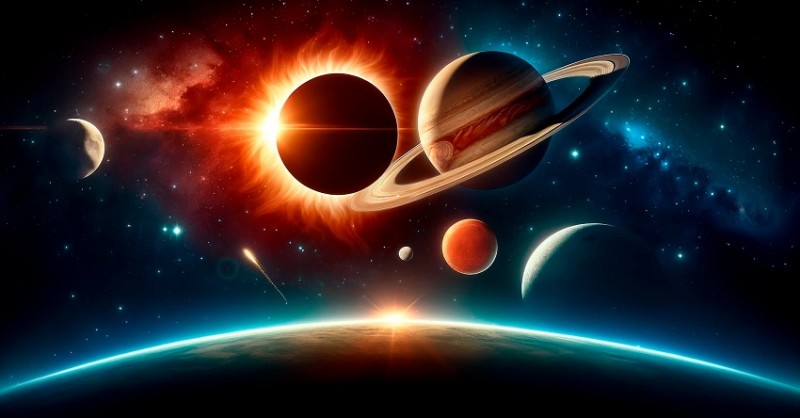
Get ready to mark your calendars because on April 8th, a rare celestial event is set to dazzle North America. A total solar eclipse will sweep across the continent, casting a shadow from northern Mexico all the way to Maine, momentarily blocking out the sun for millions of viewers.
It's been a while since the United States experienced such a phenomenon, with the last total solar eclipse occurring back in 2017. And don't hold your breath for the next one - it won't grace our skies until 2044. Here’s everything you need to know to catch this once-in-a-generation event.
What Happens During a Total Solar Eclipse?
During a total solar eclipse, the moon slides between the sun and the Earth, casting a shadow along its path and momentarily plunging areas into darkness. But the excitement doesn't stop there. Temperatures drop, streetlights flicker on, and even birds and plants behave strangely. The sun's corona, its fiery atmosphere, becomes visible, creating mesmerizing crescent-shaped rays on the ground.
But that's not all. Look up, and you'll see the sky come alive. Stars, planets, and even a comet will grace the heavens during the eclipse. Venus will shine the brightest, but keep an eye out for Jupiter, Saturn, and Mars too. Mercury will make a faint appearance, and lucky viewers might even catch a glimpse of comet 12P/Pons-Brooks, a rare treat that only swings by every 71 years.
Where Can You See the Eclipse?
The eclipse's path of totality stretches from Texas to Maine, cutting through major cities like Dallas, Little Rock, Indianapolis, Cleveland, Buffalo, and Burlington, Vt. This path, about 115 miles wide, will provide the best view of the eclipse, and over half of the country's population lives within 250 miles of it.
How Long Will It Last?
The duration of the eclipse varies depending on your location. The longest stretch of darkness will be in Torreón, Mexico, lasting an impressive 4 minutes and 28 seconds. Even major U.S. cities will enjoy around 4 minutes of awe-inspiring darkness.
What Will It Look Like Near You?
Even if you're not in the path of totality, you'll still witness a partial eclipse. The extent of the sun's coverage will vary depending on your location. Check out our customizable map to see what to expect in your city.
Why Is This Eclipse Special?
This total solar eclipse is a rare event, and it's worth experiencing in person. But be prepared for traffic jams and delays as millions of Americans flock to witness this celestial spectacle. Some places have been planning for eclipse visitors for over a year, like New York, which even appointed an "eclipse czar" to manage the influx of tourists.
Do You Need Special Glasses?
Yes, you absolutely do. Looking directly at the sun, even during an eclipse, can damage your eyes. Eclipse glasses with the International Organization for Standardization (ISO) 12312-2 code are essential. Check the American Astronomical Society's list of trusted manufacturers and vendors to ensure you're getting the right ones.
Can You Take Photos?
Photographing a total eclipse is easier than you might think, especially with the right equipment. A tripod and solar filter can help you capture stunning images with your smartphone. Just remember, safety first!
How Often Do Total Solar Eclipses Happen?
Total solar eclipses occur roughly every 18 months, but they're not always visible from populated areas like the United States. After April 8th, it'll be a couple of decades before Americans get another chance to witness this incredible phenomenon.
So, get ready to witness nature's most awe-inspiring show. Don't miss out on this once-in-a-lifetime event!